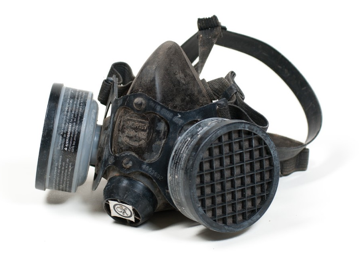LEARNING TASK 1 : Describe safety gear and work clothing
Personal protection
On the job site, workers need to wear special personal protective equipment. The equipment you wear will depend on the specific hazards you may expect to encounter. You may be supplied with all or some of the following equipment:
- goggles
- face shield
- gloves
- safety lock
- hard hat
- welder’s apron
- coveralls
- respirator
- hearing protection
- high-visibility vest
- body harness
Protective equipment can be divided into the following categories:
- head protection
- eye protection
- hearing protection
- respiratory protection
- hand and skin protection
- foot protection
- fall protection
Selecting PPE
All PPE clothing and equipment should feature a safe design and construction and should be well maintained. Workers should consider the fit and comfort of PPE when selecting appropriate items for their workplace. Most protective devices are available in multiple sizes, and care should be taken to select the proper size. If several different types of PPE are worn together, make sure they are compatible. PPE that does not fit properly can make the difference between being safely covered or dangerously exposed. It may not provide the level of protection desired and may discourage use.
Head protection
Hard hats protect workers where there is a hazard of head injury from falling, flying, or thrown objects, or other harmful contacts. The headband made of webbing inside the hat (also known as a hard hat’s suspension system) provides a space between the shell and your head, which lessens the impact of anything falling on your head. The headband is adjustable.
Most job sites require that hard hats be worn at all times while on the site. The shells of most hard hats are now almost always made from high-impact plastic, but a few are still made from metal alloys. Do not wear a metal alloy hard hat when working on electrical equipment.
Hard hat types
The proper type or class of hard hat required will vary for specific areas or for specific jobs. Different hard hats protect against different types of hazards, such as:
- banging your head on a sharp or hard object
- being hit by a falling object
- receiving a shock when working near electrical apparatus

Hard hats must have either CSA- or ANSI-approval. These standards are similar but not exactly the same. Many manufacturers have their head protection tested to meet both standards. These standards are divided into two types:
- Type 1 for top protection only
- Type 2 for top and lateral protection
Hard hats are also divided into three industrial classes:
- Class A hard hats provide impact and penetration resistance along with limited voltage protection (up to 2200 volts).
- Class B hard hats provide the highest level of protection against electrical hazards, with high-voltage shock and burn protection (up to 20 000 volts). They also provide protection from impact and penetration hazards by flying/falling objects.
- Class C hard hats provide lightweight comfort and impact protection but offer no protection from electrical hazards.
Another class of protective headgear on the market is called a “bump hat,” designed for use in areas with low head clearance. Bump hats are recommended for areas where protection is needed from head bumps and lacerations. They are not designed to protect against falling or flying objects.
Periodic cleaning and inspection will extend the useful life of protective headgear. A daily inspection of the hard hat shell, suspension system, and other accessories for holes, cracks, tears, or other damage that might compromise the protective value of the hat is essential. Paints, paint thinners, and some cleaning agents can weaken the shells of hard hats and may eliminate electrical resistance. Consult the helmet manufacturer for information on the effects of paint and cleaning materials on their hard hats. Never drill holes, paint, or apply labels to protective headgear, as doing so may reduce the integrity of the headgear’s materials. Do not store protective headgear in direct sunlight, such as on the rear window shelf of a car, since it can be damaged by sunlight and extreme heat.
Hard hats with any of the following defects should not be used and should be replaced:
- perforation, cracking, or deformity of the brim or shell
- any indication of exposure of the brim or shell to heat, chemicals, or ultraviolet light and other radiation (in addition to a loss of surface gloss, such signs include chalking or flaking)
Always replace a hard hat if it sustains an impact, even if damage is not noticeable. It is not necessary to replace the entire hard hat if just the suspension system is damaged. Suspension systems are available as replacement parts if they are damaged or show excessive wear.
Some workers are more comfortable wearing their hard hats backwards. This still meets WorkSafeBC requirements if the hat’s suspension is also reversed, but if you can’t reverse the suspension, you must not reverse the hard hat.
Eye protection
Eye protection is one of the most important safety concerns of people on the job site. Eye hazards include:
- splashes from liquids, such as acids and caustics
- sparks flying off of a grinder
- dust kicked up by compressed air
- “flash” from a welder working nearby
- exposure to laser pointer light
There are many types and styles of eye protection available. Some of the most common types include:
- safety glasses
- goggles
- face shields
- welding helmets
- laser safety goggles
Safety glasses
These protective eyeglasses have safety frames constructed of metal or plastic and impact-resistant lenses. Side shields are available on some models.
Wear specially designed and manufactured safety glasses to protect your eyes in activities such as:
- working on any live electrical equipment
- using cutting pliers to cut material
- soldering or de-soldering
- using an electric hand drill
- hammering
- working with tool steel

Goggles
Goggles are a type of tight-fitting eye protection that completely cover the eyes, eye sockets, and the facial area immediately surrounding the eyes. They provide protection from impact, dust, and splashes. Some goggles will fit over corrective lenses.
Wear goggles to protect your eyes when doing activities such as:
- drilling or chipping, hammering, and working with steel
- using a powder-actuated tool
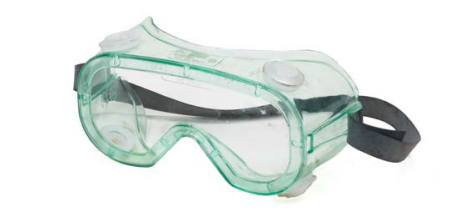
Face shields
These transparent sheets of plastic extend from the eyebrows to below the chin and across the entire width of the head. Some are polarized for glare protection. Face shields protect against nuisance dusts and potential splashes or sprays of hazardous liquids, but they will not provide adequate protection against impact hazards. Face shields used in combination with goggles or safety glasses will provide additional protection against impact hazards.
Wear a face shield to protect your face in activities such as:
- using a grinder
- using a drill press
- using compressed air for cleaning
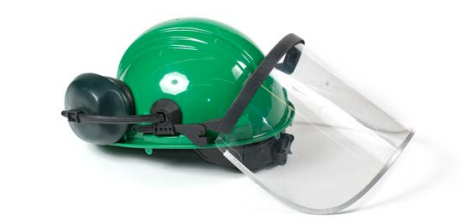
Welding helmets
Constructed of vulcanized fibre or fibreglass and fitted with a filtered lens, welding helmets protect eyes from burns caused by infrared or intense radiant light. They also protect both the eyes and face from flying sparks, metal spatter, and slag chips produced during welding, brazing, soldering, and cutting operations. Filter lenses have a shade number appropriate to protect against the specific hazards of the work being performed and against harmful light radiation.
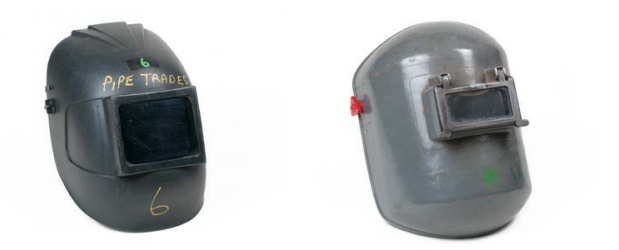
Laser safety goggles
These specialty goggles protect against intense concentrations of light produced by lasers. The type of laser safety goggles a worker chooses will depend on the equipment and operating conditions in the workplace.
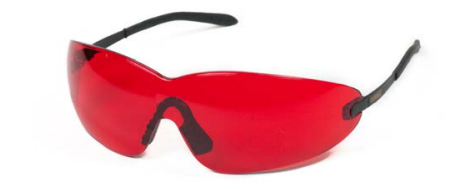
Never assume that regular prescription glasses, sunglasses, or contact lenses can provide adequate eye protection. Dust particles, wood chips, sparks, or welding flash may still cause eye damage if eyes are not properly protected.
Regardless of the job, whether grinding, chipping, drilling, or welding, always use adequate eye protection (welding goggles or helmets are not acceptable for grinding). Choose a type or style of eye protection that will protect you in the job that you are doing (e.g., goggles when chipping concrete, a welder’s helmet when welding). Also, always use safety-approved eye protection. Improper or faulty protection devices can also be hazardous.
Hearing protection
Noise on the job site can affect you in different ways. Being exposed to high noise levels and moderate noise levels over a long period of time can impair your ability to hear specific types of sounds. For example, the noise from diesel-powered vehicles such as trucks can permanently damage your hearing. High noise levels can affect your state of mind, making you easily annoyed, irritable and mentally fatigued, and can decrease your ability to concentrate and stay alert.
Hearing protection noise reduction ratings (NRR) are given in decibels (dB). If the noise level is 90 dB and a worker is wearing expandable foam plugs rated at 29 dB, the actual noise exposure will be 90 – 29 = 71 dB. When choosing hearing protection devices, you should choose a device that will reduce the noise exposure to a maximum of 85 decibels.
There are four main points to remember when choosing hearing protection:
- Choose a type or style of protection suitable to the job you are doing.
- Ear plugs should be pliable, fit each ear tightly, and be kept clean and free from damage.
- Earmuffs make it easier to hear certain signals in noisy environments.
- Headphones designed for listening to music do not offer suitable protection.
Single-use earplugs
These earplugs are made from material like expandable PVC or urethane foam. They are self-forming and, when properly inserted, they work as well as most moulded earplugs.

Pre-moulded earplugs are made from biocompatible silicon, plastic, or rubber and are manufactured as either “one-size-fits-most” or in several sizes to fit small, medium, or large ear canals. Advantages of pre-moulded plugs are that they are relatively inexpensive, reusable, washable, convenient to carry, and come in a variety of sizes.

Custom-fitted hearing earplugs
Made from impressions taken of an individual’s ear, custom-fitted earplugs completely fill the ear canal and match the ear shape of the wearer. Some custom-fitted plugs are designed to let the wearer hear conversations in noisy environments. Others have a communication speaker installed into them.
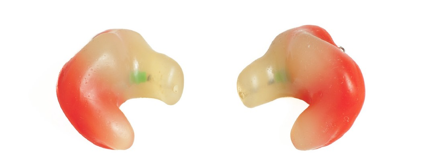
Canal caps
Canal caps resemble earplugs on a flexible plastic or metal band. The earplug tips of a canal cap may be made of a formable or pre-moulded material. These have the convenience of being easily removed and replaced as needed.
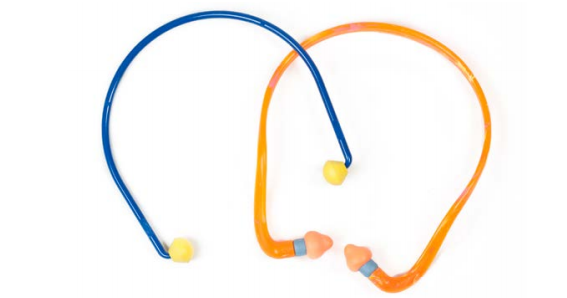
Earmuffs
Earmuffs come in many models designed to fit most people, and some styles can be connected to a hard hat. They work by blocking out noise by completely covering the outer ear.
To work properly, earmuffs must be perfectly sealed around the ears. Their effect may be reduced if glasses, facial hair, or long hair compromise the seal. Facial movements such as chewing may also affect the seal.
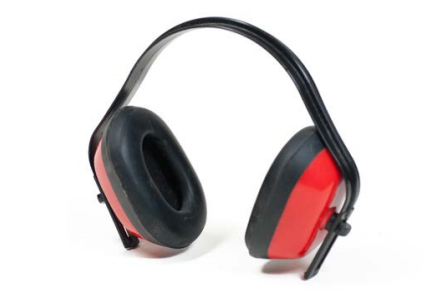
Respiratory protection
Workers must be aware of any airborne hazards present on the job and must take the necessary precautions to protect the respiratory system. Examples of hazards include airborne particles such as body filler, asbestos, or dust, as well as toxic gases or fumes. All of these are harmful if inhaled, but workers can protect themselves by wearing an approved respirator.
If you are required to use a respirator, you will need the appropriate training to select, test, wear, and maintain this equipment. Always use the appropriate respirator for the hazard involved and the extent and nature of the work to be performed, which includes choosing the correct type of cartridge and filter. Respirators must be kept clean and sterilized according to the manufacturer’s instructions. It is very important to check a respirator carefully for damage and proper fit. All respirators must be properly fitted to your face, and the seal must be checked each time the respirator is used.
There are three types of respirators commonly used for various atmosphere conditions in the workplace. These are:
- air-line or supplied air respirators
- self-contained breathing apparatus
- air-purifying respirators
Air-line respirators
Air-line or supplied air respirators have a mask or hood with a remote air supply available through a connected hose. This type of respirator is used where there is not enough oxygen or there are toxic gases or fumes in the air.
Self-contained breathing apparatus (SCBA)
An SCBA draws air from a compressed-air cylinder, which is strapped to the worker’s back. This style of respirator is used when there is not enough oxygen on the work site or there are toxic gases or fumes in the air. An SCBA has the added advantage of an independent air supply without any length of hose to be concerned with. This is the main reason why this type of respirator is more commonly used in rescue and emergency situations.
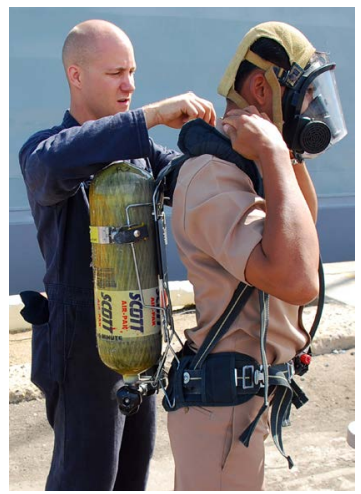
Air-purifying respirators
There are two common types of air-purifying respirators:
- dust/mist masks
- cartridge respirators
These types of respirators cannot be used in an oxygen-deficient environment. The full facepiece mask with a chemical canister can be used to protect against short exposure to dangerous gases or fumes, such as an emergency escape situation, as the cartridge in the respirator is able to neutralize the gases for a very short time only.
Dust/mist masks
Dust masks are made of paper or soft non-woven fibre and simply fit over the mouth and nose. These generally offer protection against nuisance dusts and fine mists only. Some models have a built-in exhaust valve for more comfort.
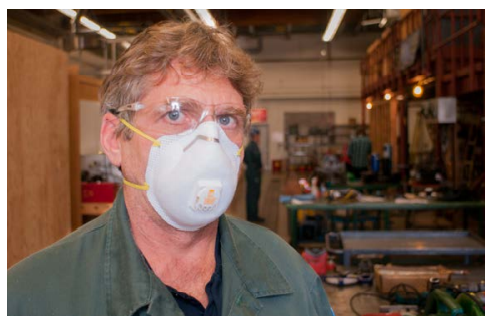
Cartridge respirators
Cartridge respirators are commonly used in conditions where there are low concentrations of organic gases, pesticides, and paint vapours. These come in “half-mask” or full facepiece” designs. Both of these designs are also made in one- or two-cartridge styles. Do not use these types of respirators to protect against highly toxic gases.
